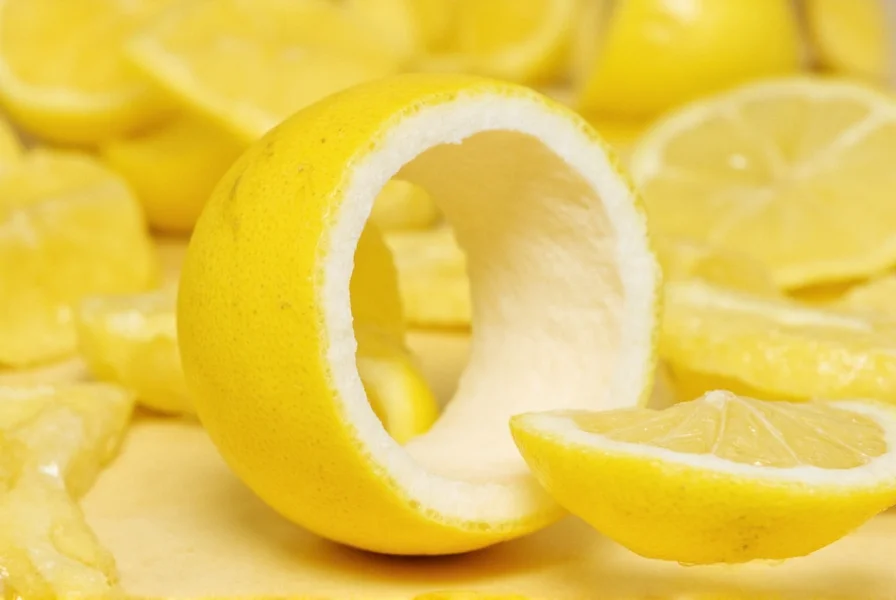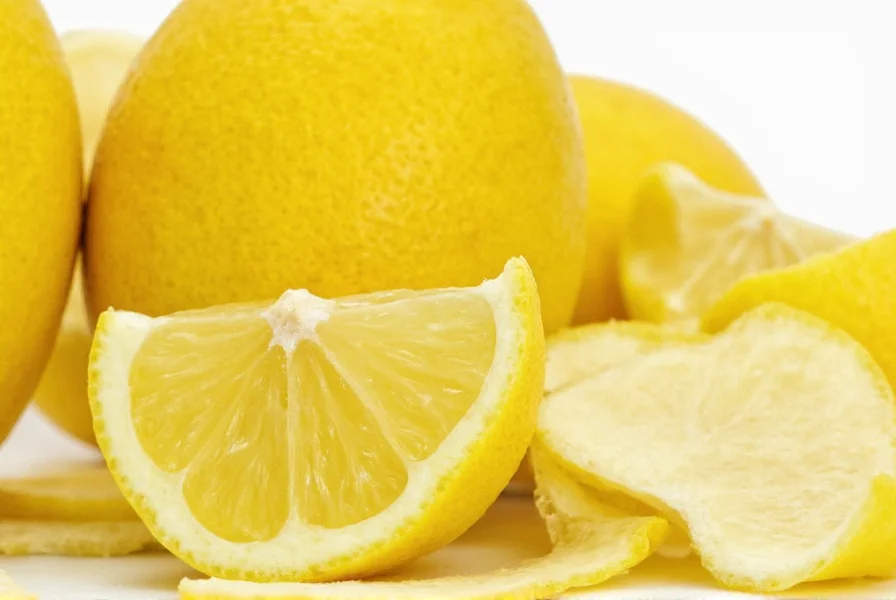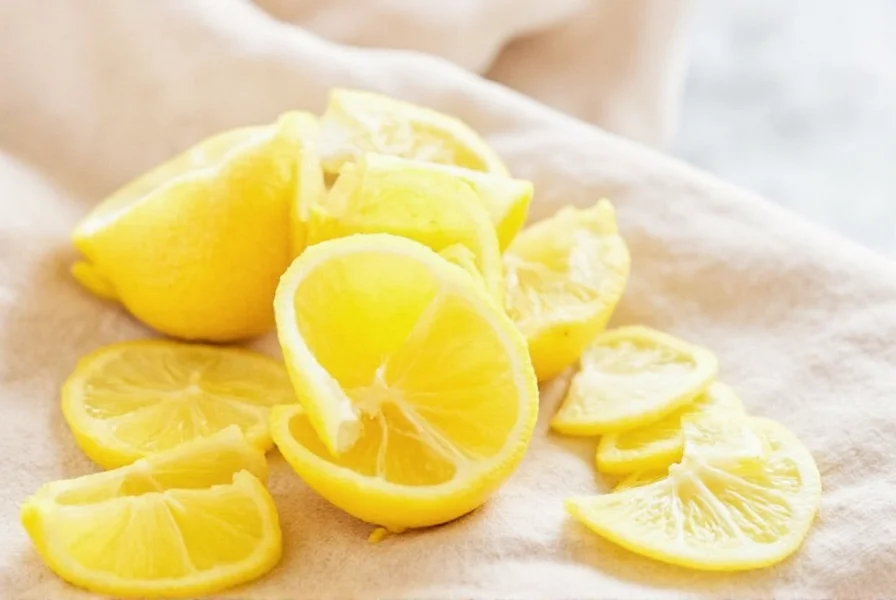Lemon peel packs a powerful nutritional punch that often gets overlooked when we discard this vibrant outer layer. While most people focus solely on the juice, the peel actually contains up to five to ten times more vitamins than the fruit's interior, particularly vitamin C and flavonoids with potent antioxidant properties. Understanding how to properly prepare and utilize lemon peel can transform your culinary creations, boost your nutritional intake, and provide eco-friendly solutions for everyday needs.
Nutritional Powerhouse Hidden in Plain Sight
Contrary to popular belief, lemon peel isn't just protective packaging—it's a concentrated source of beneficial compounds. The white pith contains soluble fiber called pectin, while the colorful outer layer (zest) houses essential oils and limonene, a compound studied for its potential anti-inflammatory effects. Research shows that lemon peel contains approximately 110mg of vitamin C per 100g, compared to 53mg in the juice. This makes incorporating properly prepared peel an excellent strategy for maximizing the nutritional value of this citrus fruit.
Practical Culinary Applications
Professional chefs and home cooks alike leverage lemon peel to add complex citrus notes without excess moisture. When exploring how to use lemon peel in cooking, consider these approaches:
| Preparation Method | Best For | Storage Duration |
|---|---|---|
| Fresh zest | Baking, dressings, finishing dishes | Immediate use |
| Candied peel | Desserts, confections | 2-3 weeks refrigerated |
| Dried zest | Spice blends, long-term storage | 6-12 months |
| Freeze-dried | Cocktails, instant flavor | 12+ months |
Understanding the difference between lemon zest vs lemon peel is crucial—zest refers only to the colored outer layer, while peel includes both the zest and the bitter white pith. For most culinary applications, you'll want just the zest, which delivers maximum flavor without bitterness.

Safe Preparation Techniques
Before using lemon peel, proper cleaning is essential, especially if you're not using organic fruit. The how to remove pesticides from lemon peel process involves:
- Rinse under cool running water while scrubbing gently with a clean vegetable brush
- Soak in a solution of 1 part white vinegar to 3 parts water for 10-15 minutes
- Rinse thoroughly under clean water
- Pat dry with a clean towel before zesting or peeling
For those concerned about is lemon peel safe to eat, the answer is generally yes when properly cleaned. However, avoid consuming peel from conventionally grown lemons that haven't been adequately cleaned, as they may contain pesticide residues or wax coatings.
Preservation Methods for Long-Term Use
Maximizing your citrus investment requires understanding citrus peel storage methods. Freeze fresh zest in ice cube trays with water or oil for convenient portioning. Alternatively, dry zest in a low-temperature oven (170°F/75°C) for 2-3 hours until brittle, then store in airtight containers away from light. Properly stored dried zest maintains its flavor compounds for up to a year, making it ideal for off-season baking or tea blends.

Beyond the Kitchen: Practical Household Applications
The versatility of lemon peel extends far beyond culinary uses. The natural citric acid and essential oils make it perfect for eco-friendly cleaning solutions. Create a powerful degreaser by steeping peels in white vinegar for two weeks, then strain for a chemical-free surface cleaner. For those exploring lemon peel for skin care, dried and powdered peel makes an excellent gentle exfoliant when mixed with honey or yogurt—just perform a patch test first as citrus can increase sun sensitivity.
Scientifically-Supported Health Considerations
While many health benefits of lemon peel are touted online, research specifically supports several key advantages. Studies published in the Journal of Agricultural and Food Chemistry confirm that d-limonene, concentrated in the peel, demonstrates potential antioxidant and anti-inflammatory properties. The high fiber content in the pith may support digestive health, while the flavonoids show promise in preliminary research for supporting cardiovascular function. However, these benefits are best realized as part of a balanced diet rather than through excessive consumption.
Common Misconceptions Addressed
Many people mistakenly believe lemon peel is toxic or inedible. In reality, the peel of untreated, properly cleaned lemons is completely safe for consumption. Another misconception involves the nutritional value of citrus peel—while it does contain more concentrated nutrients than the pulp, it shouldn't replace whole fruit consumption but rather complement it. The bitter taste of the pith often deters people, but when used judiciously in recipes, it contributes valuable fiber and nutrients without overwhelming flavor.
Can you eat lemon peel raw?
Yes, you can eat lemon peel raw after thorough washing to remove pesticides and wax. The colored outer layer (zest) is most commonly consumed, while the white pith is edible but quite bitter. Organic lemons are preferable for raw consumption of the peel.
How much lemon peel should you consume daily?
There's no established daily recommendation, but moderation is key. A teaspoon of fresh zest (about 1-2 grams) per day provides nutritional benefits without excessive citric acid intake. Those with sensitive digestive systems may want to start with smaller amounts.
Does lemon peel have more vitamin C than the juice?
Yes, lemon peel contains significantly higher concentrations of vitamin C than the juice—approximately 110mg per 100g compared to 53mg in the juice. The peel also contains additional beneficial compounds like flavonoids and limonene not found in significant quantities in the juice.
Can lemon peel help with weight loss?
While lemon peel alone won't cause weight loss, its high fiber content (particularly in the pith) can contribute to feelings of fullness. When used as part of a balanced diet to enhance flavor without added sugars or fats, it may support healthy eating habits that contribute to weight management.
How do you preserve lemon peel for future use?
The best preservation methods include freezing zest in ice cube trays with water or oil, drying zest in a low-temperature oven (170°F/75°C) until brittle, or making candied peel. Properly stored dried zest maintains flavor for 6-12 months in airtight containers away from light and moisture.











 浙公网安备
33010002000092号
浙公网安备
33010002000092号 浙B2-20120091-4
浙B2-20120091-4